Where can I put air conditioning: the choice of the optimal place for installation in a private house and apartment
How many times in the summer when the heat comes, or in the late autumn, when the apartment is uncomfortable without heating, we all remember that we were going to install an air conditioner, but our hands did not reach? You must admit that summer will come in any way in the spring, and if the issue is not resolved, then we will again languish from the heat. No ventilation or fans, and in winter heaters will not save us.
We must still decide and address the issue of choosing an air conditioner with a whole list of convenient functions that will make our life more comfortable. We will help you navigate the sea of various climatic equipment, tell you where to put the air conditioning, and how to decide on the choice of the best place for installation.
The content of the article:
Optimal air exchange in the apartment
According to statistics, a person spends in enclosed spaces at work or at home from 16 hours a day, so the issue of ventilation and air renewal is so important.
In order for a healthy and comfortable microclimate to reign in the house, several steps should be taken:
- check the operation of the exhaust system
- use supply devices if necessary
- install air conditioning
The proper functioning of the exhaust ducts can be checked in an elementary way using a strip of paper, during normal operation, the air flow draws it to the ventilation grille. The “repulsive” effect signals the presence of reverse draft.
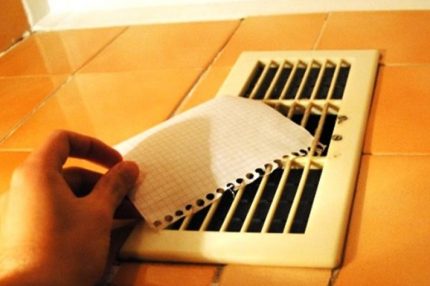
To solve the problem, it is advisable to insert a fan with a check valve. The next step will be the installation of inlet valves in plastic windows.In the case of obsolete wooden frames, the issue of air flow is solved spontaneously, without valves.
And finally, the final step. For complete comfort, i.e. getting cool in the heat and heat in the cold, the climate technology is installed (after deciding on the choice of the model and location of the air conditioner, as the efficiency depends on competent placement).
General information about air conditioners
In order to maintain the optimum comfortable temperature in the house (usually from 18 degrees to 25), it is necessary that both the climate and ventilation systems work smoothly and complement each other. Correctly assessing the needs of the premises and making a rational choice will help understanding the mechanism of action and features of climatic equipment.
Standard equipment classification
By design, air conditioners are divided into two classes:
- monoblock (represent a system, all components of which are immersed in a common housing);
- split systems (include two interacting blocks: external and internal).
The first class includes floor mobile models and window air conditioners. They are distinguished by a simplified design, extremely simple installation and low price. Compact window units are not very popular with us due to noisy work and inconvenient installation, they darken the room and spoil the view of the window.
Mobile air conditioners, small but heavy (up to 50 kg of installation with a hose), due to their mobility are in demand among summer residents, but the disadvantages are the small cooling area and high noise level.
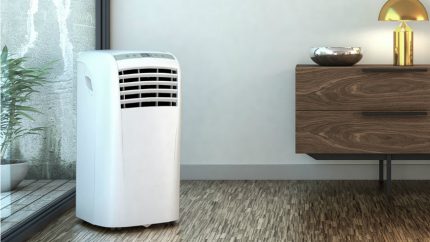
Among a variety of floor-mounted mobile air conditioners, models without a corrugated hose appeared; they are much quieter, more mobile and safer (the hose, when heated to 60 degrees, can burn).
In contrast to the above options, split systems are characterized by small size and low noise level.
Channel and cassette air conditioners mounted in the space behind the false ceiling and false walls. Column and precision floor mounting is required; these types of air conditioners belong to semi-industrial systems and are used for installation in technological rooms, museums and shops, restaurants and hotels.
Wall split systems are designed for rooms from 15 to 90 square meters. meters, they are considered the best air conditioners for arranging an apartment.
Guidelines for choosing a climate unit
In order for the air conditioner to function for a long time and properly with maximum efficiency, the necessary conditions must be met:
- choose a model suitable for the parameters of this room;
- qualified installation of the device;
- use the unit in accordance with the operating rules; carry out regular maintenance.
In the process air conditioner selection it is necessary to take into account such characteristics as the total area of the room and the number of people in it. It should take into account the orientation to the cardinal points and the presence of windows with shutters, as well as the power of the heat-generating equipment.
For cooling 10 square meters. meters, on average, 1 kW is required, therefore, when calculating the necessary refrigerating power, you need to divide the room area by 10; in addition to this main parameter, the remaining dimensions also affect the value.
For a room located on the south side, with panoramic glazing and a lot of equipment (computer, refrigerator, TV, etc.), it is supposed to increase the calculated value of optimal cooling by 20%. An insufficient capacity air conditioner, even with proper operation, will not cope with its functions.
Split system features
The most necessary and demanded functions of a split system, for which the buyer installs climate equipment, are heating, cooling and ventilation, drainage and air purification.
For proper use of the function of heating the premises, use the add-on “all-weather unit”, which is responsible for heating the crankcase and reducing the risk of compressor wear.
In ventilation mode, it is convenient to have several speeds. Then, without changes in temperature, it is desirable to adjust the circulation force of stagnant air masses. With an increase in the humidity level, a dehumidification mode will help, allowing to stabilize the indicator and prevent its negative impact.
Additional options such as a timer, regulation of air flow directions and night mode are also useful, the use of which will add comfort when operating the air conditioner.
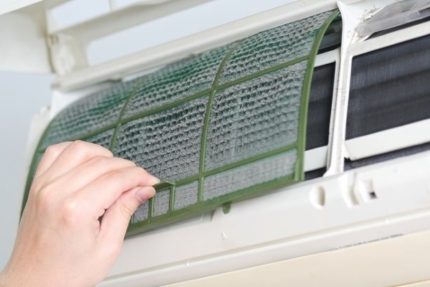
However, one of the most important and necessary functions is to clean the air before serving. This occurs during the filtration process using a standard coarse filter (a plastic mesh that needs regular inspection) that traps dirt, large dust particles and animal hair.
Fine filters that retain particles of several microns are also used. Some models complement carbon, removing unpleasant odors, and electrostatic, which eliminate various allergens, fine dust and pollen from plants.
Wall conditioner options
Filters, a 3 or 4-speed fan, horizontal blinds and a condensate tray, necessary to perform all of the above functions, are components of the indoor unit of a wall-mounted split system (or simply a “domestic air conditioner”).
Wall type of air conditioner considered the most common and deservedly popular for a private house and apartment, with a capacity of 2 - 7 kW it cools small rooms from 15 to 75 square meters. m
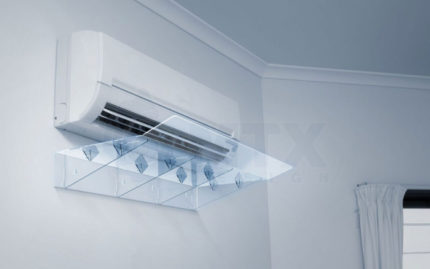
Small sizes (height from 20 to 30 cm, depth from 16 to 20 cm and width within 0.7-1.6 m), complete with simple installation and easy operation have become the main advantages of this model. The advantage is the low noise level achieved by installing the compressor on the street side.
When working on space heating, the external unit acts as an evaporator, and the internal one as a condenser. In the case of cooling mode, each unit performs the opposite function.
Traditional block placement
The outdoor and indoor units of the wall-mounted air conditioner communicate with each other using freonotrassy. These are copper tubes with circulating freon (R22, R410a or R32). The control and power cables, as well as the plastic tube for condensate discharge to the street, are still being laid.
The optimal length of the line between the units should be no more than 5 m (this applies to inverter air conditioners more than others), in cases of a higher value, freon refueling will be required. This limitation affects the choice of location of the climate system, where it is correct to install the external and internal air conditioning units in the house.
The simplest “standard” installation option implies placing both units in accessible places, with a communication length of not more than five meters (PVS, flex and pipe), and a drainage tube - three meters.The thickness of the brick wall between the blocks should not exceed 0.8 m, and the walls of concrete 0.6 m.

The inner part of the system is fixed in the upper part of the wall near the window, the outer part with the compressor is under the window, the distance between them is directly proportional to the decrease in power of the unit.
Based on this, the smaller this gap, the more efficient the air conditioner. Therefore, it is desirable to place the indoor unit on the same wall as the external one. But at the same time, each manufacturer calculates a personal maximum between the blocks.
Outside Location
The external unit of the wall-mounted air conditioner is one of the most important parts of a split system. It includes the following elements: compressor, fan and condenser, control board and four-way valve. In order for all these devices to interact in a high-quality manner and to perform their functions as efficiently as possible, it is necessary to take the placement of the unit seriously.
After choosing and acquiring, each consumer is faced with the task of how and where to correctly hang or place outdoor air conditioning unitas the location and conditions are very important.
In the selection process, the following parameters must be taken into account:
- device weight (usually between 20-70 kg);
- wall material and the ability to blow air;
- access without interference for maintenance;
- protection against environmental factors.
Installation of the outdoor unit is most often done on the outside of the building, while it is necessary to check the strength of the wall section (fasteners to a dilapidated surface are prohibited). The quality of fastening is also strictly controlled in the presence of a layer of insulation materials (anchors and brackets are used with a large margin of safety).
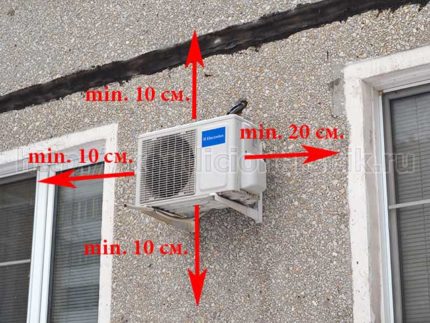
For free air circulation and inadmissibility of overheating, the unit is placed at a distance of at least 15 cm from the wall and 20-30 cm to the nearest obstacle, preferably on the shadow side. Installation under a window with an opening sash is made for ease of maintenance.
In rare cases, when mounting on the upper floors, the outdoor unit is placed on the roof or a non-glazed balcony (provided that there is sufficient airflow).
Optimum internal component location
The installation location of the indoor unit should be determined taking into account the rules for placing the air conditioner in the house (room) and the features of the functioning of the equipment.
Therefore, when choosing the optimal placement of the block, it is necessary to provide compliance with the requirements:
- distances to the external block, ceiling, walls and other obstacles;
- the presence of space to heat sources;
- free circulation of the air flow of the system;
- the likelihood of a person being present at risk.
Air is taken from the room through the upper part of the device, in connection with this there must be space to the ceiling and side surfaces of at least 10-15 cm. Installation over horizontal surfaces (shelf, chest of drawers or cabinet) is not recommended, if the distance is less than 0.7 - 1.0 meters.
Due to the fact that the temperature sensors of the unit react to nearby air currents, it is impossible to mount the air conditioner near radiators, a boiler, a gas stove and other heat resources, as this will cause the air conditioner to work continuously for cooling and lead to rapid wear.
And the main problem in finding a location for climate technology is the least likely negative impact on human health. Each room of the apartment has individual requirements, however, the main condition must be met everywhere - the cold stream should not go to places where households have been for a long time.
The highest concentration of chilled air is observed at a distance of 2-3 meters from the device, then the cold dissipates.
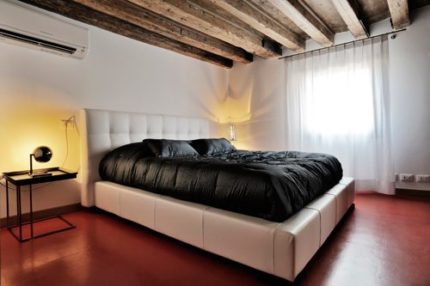
On this basis, in the bedroom, air conditioning is installed on the wall at the head of the bed, on the side of the bed. In the living room, the optimal place will not allow the sofa and dining table to get into the three-meter risk zone. In the children's room, it is recommended to turn on the air conditioning during the absence of the child.
In the kitchen, with an abundance of equipment (radiator, refrigerator, stove), window air conditioners and corner compact models are often chosen. However, due to unstable humidity with temperature, the placement of climatic equipment that is not adapted to such conditions is prohibited by manufacturers. The problem is usually solved by installing a fan in the hood.
Private air conditioning options
When planning and calculating the air conditioning system in a private house, they are usually guided by the same rules as in other rooms - the size of the area, sources of excess heat, the number of people living, etc.
But during the construction of a new house, there is a chance to carefully consider the location of both the furniture and the devices of the ventilation and air conditioning systems so that the monitoring sensors are correctly placed and do not misinform the climate system.
In choosing a model of equipment for a private house, much more options are considered (many types of air conditioning in conventional apartment buildings are difficult to install).
Therefore, in addition to standard split systems, channel and cassette air conditionersusing the attic or attic. They use universal ceiling-floor or multi-systems (for country houses from 150 sq. M. Multi-zone VRF and VRV systems).
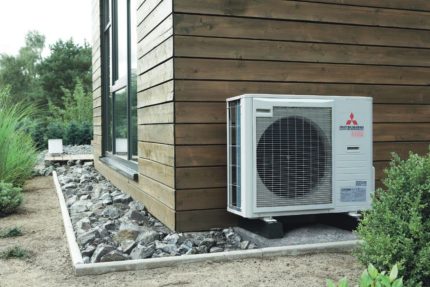
And finally, to choose where to install the air conditioner correctly so that it harmoniously looks in the apartment, several proven decorating methods will help:
- air conditioning decoration;
- disguise behind a decorative screen;
- placement in a niche or on an open shelf.
If there is no niche in the wall, if there is no screen or shelf in the right tone, simple alternative design options are possible.
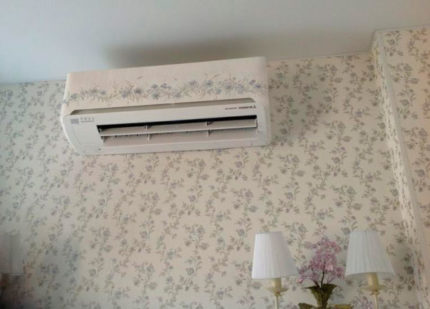
Photographic printing is pasting the facade of the air conditioner with individual stickers in the tone of the environment. The artist paints the air conditioner case with acrylic paints or a special spray gun with artistic painting. In any case, the air conditioner will be in harmony with the design of the room.
The principle of installing an air conditioner is generally simple, but details and details are important, they will help the equipment work more efficiently, and we feel more comfortable.
Conclusions and useful video on the topic
Tips for buying an air conditioner, how to buy a high-quality unit and not overpay for it?
The device, the pros and cons of a mobile outdoor air conditioner:
Detailed instructions for switching the air conditioner to heat:
We all want our house to breathe freshly and easily, so you need to try to choose a climate technique that will fit into the home ventilation system and work together with it. And the main thing will be not only the model of equipment, but also where this air conditioner is installed.
Everyone will install air conditioning in the house, based on their own tastes, design and capabilities of the room, but you will have to adhere to a few most necessary strict rules.
If the information in the article came in handy or came up with an interesting thought, share your ideas in the comments.

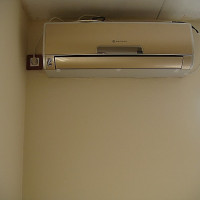 Rules for the location of the outlet for air conditioning: choosing the best place to install
Rules for the location of the outlet for air conditioning: choosing the best place to install 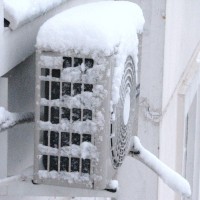 Is it possible to use air conditioning for heating in cold weather and how to prepare it for this job?
Is it possible to use air conditioning for heating in cold weather and how to prepare it for this job? 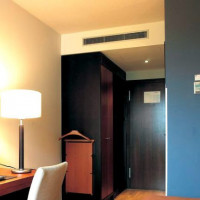 Air conditioner with fresh air supply: design and selection of a supply air split system
Air conditioner with fresh air supply: design and selection of a supply air split system 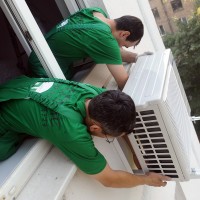 When to install the air conditioner during repair: the best period for installing the air conditioner
When to install the air conditioner during repair: the best period for installing the air conditioner 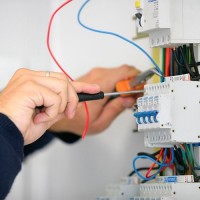 Which automatic machine to put on an air conditioner in an apartment: selection, installation and connection of a protective device
Which automatic machine to put on an air conditioner in an apartment: selection, installation and connection of a protective device 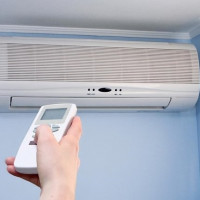 Air conditioning and split system - what is the difference? Differences and selection criteria for climate technology
Air conditioning and split system - what is the difference? Differences and selection criteria for climate technology  How much does it cost to connect gas to a private house: the price of organizing gas supply
How much does it cost to connect gas to a private house: the price of organizing gas supply  The best washing machines with dryer: model rating and customer tips
The best washing machines with dryer: model rating and customer tips  What is the color temperature of light and the nuances of choosing the temperature of the lamps to suit your needs
What is the color temperature of light and the nuances of choosing the temperature of the lamps to suit your needs  Replacement of a geyser in an apartment: replacement paperwork + basic norms and requirements
Replacement of a geyser in an apartment: replacement paperwork + basic norms and requirements